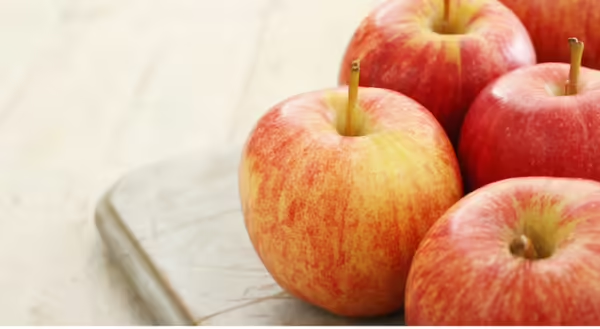
Are you patiently waiting for the apple season? The abundance of apples may come from an apple tree, a visit to the orchard or a local farmers market, or your local market. Right now in Illinois, the hot summer sun is preparing this delicious fruit for the harvest season.
Many apple varieties are available all year. In Illinois, the apple harvest season runs July to November. During this time, I find local varieties that I look forward to each year, such as McIntosh, Ever Crisp, or Blushing Gold.
How many apples do you eat a week? Do you eat an apple every day? You know what the doctor says, right? Apples provide many health benefits: one medium-sized apple is about 80 calories and a good source of fiber and vitamin C. Apples are full of antioxidants and anti-inflammatory properties. It’s true, an apple a day keeps the doctor away.
How many ways can you eat an apple? Apples are one of the only fruits that can be enjoyed raw, cooked, or juiced. They are a versatile fruit with many options for food preservation, though not all apples preserve well. Enjoy Red Delicious for eating fresh; it’s not a good choice for preserving.
Think of all the things you can make with apples. With this delicious fruit, you can fill your pantry. Preserve juice and cider, freeze slices of apples, make homemade apple pie filling, applesauce, apple butter, and apple jelly. Apples can also be dehydrated into apple chips, slices, and leather. When the cold, winter winds are blowing, enjoy this delicious food well into the next season.
Before preserving, watch University of Illinois Extension What’s Cooking? With Mary Liz Wright to make sure you have all your canning supplies. Below is a list of supplies for preserving apples:
- Boiling water bath canner or a large, deep saucepot with a lid, and a rack
- Glass preserving jars, lids, and bands (always start with new lids)
- Everyday kitchen utensils, such as a wooden spoon, ladle, and paring knife
- Apple peeler
- Cutting Board
- Jar lifter
- Home canning funnel
- Bubble freer and headspace tool
- Timer
- Hot pads
- Tested recipes
Be safe, clean, and sanitize your kitchen before preserving. You know what they say, the kitchen sink is the germiest place in the house! Make sure your inner sink, countertops, and utensils are cleaned and sanitized before you rinse your produce to avoid cross-contamination. Before washing produce, such as apples, take time to wash your hands with soap for the recommended 20 seconds.
Wash your apples under running tap water, remove any lingering dirt. Rinsing apples reduces any germs that may be present. Scrub your apples gently with a brush while holding under running water. Many people ask, “Do I need soap?” The answer is NO! Detergent, soap, or commercial produce washes are not necessary; good ole running tap water does the trick. Dry your apples with a clean cloth or paper towels.
Be in safe hands and use a reliable, trusted recipe. Explore tested recipes and preservation practices at the National Center for Home Food Preservation site, and Illinois Extension Nutrition, and Wellness.
SOURCE: Susan Glassman is a Nutrition and Wellness Educator serving Bureau, LaSalle, Marshall, and Putnam Counties.